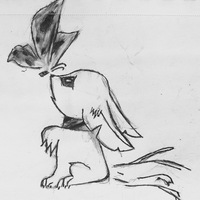
Слоник, Мартышка, Жираф и Удав показывали фокусы с исчезновением шара под цилиндром. У каждого из
них было по 4 шара. Шары были белые и черные. Сколько всего белых шаров спрятано под цилиндрами, если известно, что у Жирафа и Мартышки одинаковое количество черных шаров, у Слоника на 1 черный шар больше, чем у Мартышки, а у Удава столько же белых шаров, сколько у Слоника черных? 0
0
 0
0
Ответы на вопрос
 Внимание! Ответы на вопросы дают живые люди. Они могут содержать ошибочную информацию, заблуждения, а также ответы могут быть сгенерированы нейросетями. Будьте внимательны. Если вы уверены, что ответ неверный, нажмите кнопку "Пожаловаться" под ответом.
Внимание! Ответы на вопросы дают живые люди. Они могут содержать ошибочную информацию, заблуждения, а также ответы могут быть сгенерированы нейросетями. Будьте внимательны. Если вы уверены, что ответ неверный, нажмите кнопку "Пожаловаться" под ответом.

у слоника 3черн. шара +1 белый, в том числе 1 белый под цилиндром.
у Мартышки 2 чёрных шара+2 белый+1под цилиндр.
у жирафа 2 чёрных +2 белых +1 под цилиндр.
у удава 1черный +3белых+ 1под цилиндр.
всего спрятано под цилиндром 4 белых шара
 0
0
 0
0

Problem Analysis
We are given that an elephant, a monkey, a giraffe, and a snake are performing magic tricks involving the disappearance of balls under cylinders. Each of them has 4 balls, which can be either white or black. We need to determine the total number of white balls hidden under the cylinders. We are given the following information: - The giraffe and the monkey have the same number of black balls. - The elephant has 1 more black ball than the monkey. - The snake has the same number of white balls as the elephant has black balls.Solution
To solve this problem, let's assign variables to represent the number of white and black balls for each animal: - Let G represent the number of black balls for the giraffe. - Let M represent the number of black balls for the monkey. - Let E represent the number of black balls for the elephant. - Let S represent the number of white balls for the snake.Based on the given information, we can write the following equations: 1. The giraffe and the monkey have the same number of black balls: G = M. 2. The elephant has 1 more black ball than the monkey: E = M + 1. 3. The snake has the same number of white balls as the elephant has black balls: S = E.
To find the total number of white balls hidden under the cylinders, we need to determine the value of S. Let's substitute the equations above to express S in terms of M: - From equation 3: S = E. - From equation 2: E = M + 1. - Substituting E in equation 3: S = M + 1.
Now, we need to find the value of M. Let's use the information given in the problem: - The giraffe and the monkey have the same number of black balls: G = M. - The elephant has 1 more black ball than the monkey: E = M + 1.
Since the giraffe and the monkey have the same number of black balls, we can substitute G with M in equation 2: E = G + 1.
Now, we have two equations with two variables (E and M): 1. E = G + 1 2. E = M + 1
Since both equations are equal to E, we can equate them: G + 1 = M + 1.
Simplifying the equation, we find that G = M.
Therefore, we can conclude that the giraffe and the monkey have the same number of black balls.
Now, let's substitute G with M in equation 3 to find the value of S: S = M + 1.
To find the total number of white balls, we need to add the number of white balls for each animal: Total white balls = S + S + S + S = 4S.
Therefore, the total number of white balls hidden under the cylinders is 4S.
Calculation
To find the value of S, we need to determine the value of M. Unfortunately, the given information does not provide the specific values for M or G. Without this information, we cannot calculate the total number of white balls hidden under the cylinders.Please provide the specific values for M or G so that we can proceed with the calculation.
 0
0
 0
0
Топ вопросов за вчера в категории Математика
Последние заданные вопросы в категории Математика
-
Математика
-
Литература
-
Алгебра
-
Русский язык
-
Геометрия
-
Английский язык
-
Химия
-
Физика
-
Биология
-
Другие предметы
-
История
-
Обществознание
-
Окружающий мир
-
География
-
Українська мова
-
Информатика
-
Українська література
-
Қазақ тiлi
-
Экономика
-
Музыка
-
Право
-
Беларуская мова
-
Французский язык
-
Немецкий язык
-
МХК
-
ОБЖ
-
Психология
-
Физкультура и спорт
-
Астрономия
-
Кыргыз тили
-
Оʻzbek tili





















